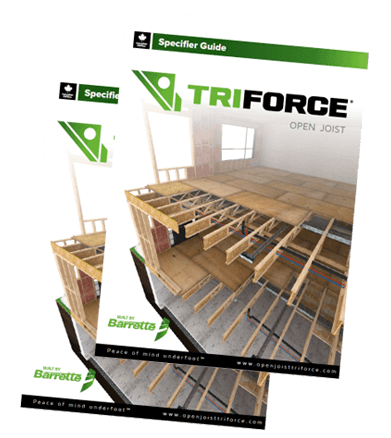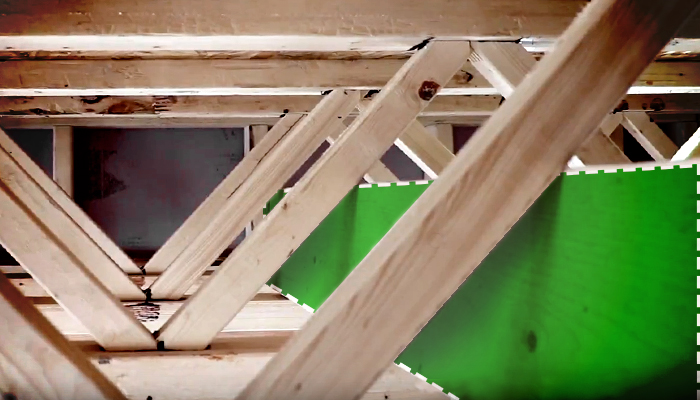Science fiction title? How about the technical description of how strongback bridging works. Transient oscillations don’t represent the serious danger that hostile extraterrestrials might pose, but they do result in discomfort and uneasy feelings in humans. Transient oscillations are vibrations in a floor system, caused by footfalls or rhythmic motions (such as a washing machine in spin cycle).
Even though there is no “ideal” standard of performance for floor systems, and comfort is a subjective measure that varies from one person to another, Canadian building codes have recognized the effects of vibration and prescribed actions to minimize it. U.S. codes have not. But while American codes do not address vibration, architects and developers recognize the need to produce structures that offer maximum physical and psychological comfort. Consequently, they take measures to lessen the annoyance of vibration.
Time to send in the strongbacks!
“Strongback” originated as a term in wooden boat construction and describes the center rib of a vessel, tying the sides together in a strong configuration. Strongbacks used today in open-web floor joist systems are 2X dimension lumber running perpendicular to and within the joists. Their purpose is to provide transversal rigidity. The resulting rigidity effectively damps vibration.
Strongbacks are only effective if installed properly. Generally speaking, they are positioned on edge on the joist’s bottom chord and run continuously through the floor framing. Manufacturer’s instructions specify the size and position of the strongbacks which vary with spans, joists spacing, depth of the joists, etc. Strongbacks may be cut to allow access for mechanical systems and they may be spliced. Floor system suppliers include instructions for performing these actions correctly.

(Image from our US Specifier Guide – Download your copy!)
Go beyond the code
So you will notice we have not discussed the structural contribution of strongback bracing. That is because no strengthening effect on a floor system is acknowledged. According to ANSI:
“ Strongbacking is recognized for serving two purposes: reducing floor vibrations and limiting differential deflection. Strongbacking does not, however, contribute to or enhance the strength or structural integrity of the system.”
Even though strongbacks are not required in U.S. applications, they improve performance more effectively than other types of bridging and are recommended for superior floor systems.
Strongback bridging is a major contributor to TRIFORCE® peace of mind underfoot!

